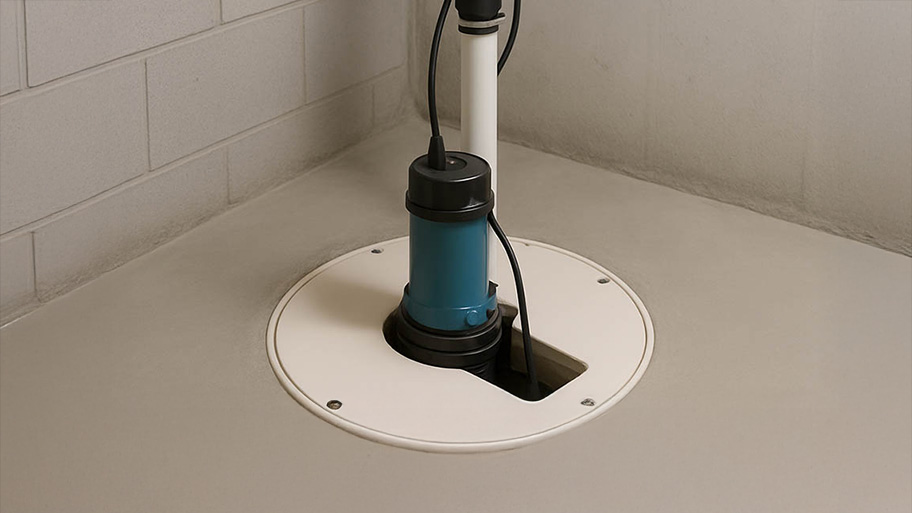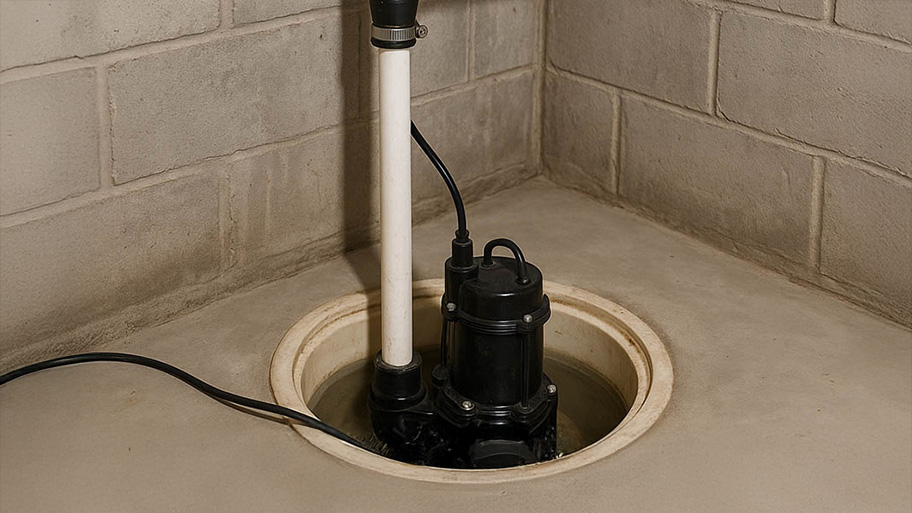
Discover how much sump pump installation costs, including average prices, key cost factors, and tips to save on your basement waterproofing project.
Water damage isn’t the only worry when your basement floods


When a rainy day becomes a heavy downpour, you might be dealing with a flooded basement. Not only can a damp or flooded basement be a bummer for anything you were storing down there, but you may also be facing the risk of electrical hazards when it comes time to clean.
However, protecting your house ahead of time and taking precautions in the moment will mitigate damage caused by flooding, make the mess at least a little easier to clean up, and prevent any electrical dangers in the process. With a few common tools and the right tips, your basement will be dry and clean again before you know it.
Just a note: When it comes to major flooding, you're always better off hiring a pro for this job, as it can be very dangerous. If you don't feel comfortable that you can safely clean your basement, or there's been major damage, be sure to call in a professional.
In general, basements are prone to flooding because they’re underground, so it’s never a bad idea to give the foundation of your home extra protection. Here are a handful of the things you can do ahead of time to minimize water damage in flooded basements.

Though you might not automatically associate your gutters with your basement, these two go hand in hand. If the former is clean and clear, water is less likely to build up, pool at the foundation of your home, and eventually flood your basement. Take steps to clear away any leaves and have a local gutter cleaning pro give them a look twice a year or so.
Lengthen the bottom of your downspouts with extension pipes to divert water even further away from the base of your home. Clean and repair these just as you would your downspouts and gutters.
If it’s only a matter of time before heavy rainfall becomes a pressing issue, investing in a battery-powered backup sump pump may be worth the extra cost. A sump pump is a draining device that’s submerged into the lowest point of your house, and an excessive downpour can push it past its capacity.
Having a smaller, backup sump pump on hand will keep you covered when the other is down and out. Though you’ll pay an average of $150, odds are you’ll save on repairs because of the additional security measure.

If possible, try to relocate any electrical components in your basement to another area of your home that’s less vulnerable to flood damage before any flooding occurs. That list includes appliances like washing machines, breaker boxes, electrical wiring, and any other electric-powered tools you may have lying around. Doing so will greatly minimize electrocution hazards in case basement floods do occur.
Safely cleaning a basement requires a few tools, a bit of patience, and a lot of hands-on work.
Before you begin, never try to enter a basement until local authorities give you the OK, especially if there's been major flooding. It will always be safer to call in a pro, like a local water damage remediation company, to do the work. They can help you salvage any flood-damaged items more efficiently and let you know if it's safe to enter your basement. If there has been major damage, you'll definitely want to proceed with even more caution, and seriously consider hiring a pro for the job, especially if there is a risk of collapse or debris falling.
If flooding is fairly minimal and you feel you can complete the cleanup safely, call in some family members or friends to help you accomplish this one because it’s much safer to attempt this task with a buddy or two.
Wearing the correct protective gear is a must for reducing electrical hazards when cleaning a flooded basement. Don knee-high rubber boots, rubber gloves, and long-sleeve shirts and pants to keep you fully insulated from any stray electricity. Wear a high-filtration respirator in case any natural gas or carbon monoxide broke free during the flood.
Even if you removed most of the electric-powered objects from your basements, odds are there are still a few bulbs and wires hanging out down there. To minimize electrical shock risks, shut down the power before even entering the space. Make sure you do so with dry hands and while standing on a dry surface. You may have to use a dry object, like a broom handle, to do so from a distance. If possible, turn off the gas from a distance as well.
Again, if you feel uneasy at all about the state of the electrical objects in your basement, or can't safely get to the breaker box to turn off the power, do not attempt to DIY this process.
Before you can start removing water, you have to find out if the flooding has even stopped. FEMA recommends that you mark the wall where it meets the water with a pen or pencil, then remove around 1 foot of the water in the space. You can use a pool pump, water vacuum, or bucket and mop to do this. Then, leave the area alone for 24 hours before continuing.
This waiting period has two purposes: It will let you see if water is continuing to flow in or if it’s stalled, and it prevents your basement from caving in on itself. The weight that water-saturated soil applies to the basement walls and floors may cause it to buckle or collapse if you remove the water too quickly.
After 24 hours, remove another foot of water and let it stand for another full day. From then on, you can begin to remove 2 to 3 feet of water every 24 hours until your basement is completely empty.
Once the water is gone, the cleanup clock starts ticking. The longer you wait to do it, the more likely mold will form and that your basement will incur long-term water damage.
Take wet furniture and objects out of the space: Ideally, place these objects in a well-ventilated room or outside area where they’ll be able to dry without unnecessarily humidifying your space.
Cut away damaged drywall and fiber insulation: Don’t leave any wet wall behind through this process. In some cases, you might even be able to simply yank away the damaged pieces without requiring a special tool.
Clean and dry every surface: Remove as much moisture as possible from all surfaces. You may need to remove and dispose of carpet or area rugs that are overly waterlogged.
Use a dehumidifier to eliminate remaining moisture: Once you’ve done all you can, let a machine do the rest of the work for you.
From average costs to expert advice, get all the answers you need to get your job done.

Discover how much sump pump installation costs, including average prices, key cost factors, and tips to save on your basement waterproofing project.

Sump pump battery backup costs depend on the type and the design of the system purchased. Follow this guide to learn how to budget for your backup battery.

Sump pump replacement costs depend on the type of unit you have and the cost of labor, which varies by region. Read on to find out more about what to expect.

Dealing with a damp basement? Follow these steps for DIY basement waterproofing to keep water and moisture out and boost your home’s energy efficiency.

If you are wondering who cleans crawl spaces, don't pick up that broom and dustpan until you read this first. This is a job for experts and not DIYers.

There are a few different things that make a crawl space smell like sewage. This guide will help you find the issue and learn how to fix it.